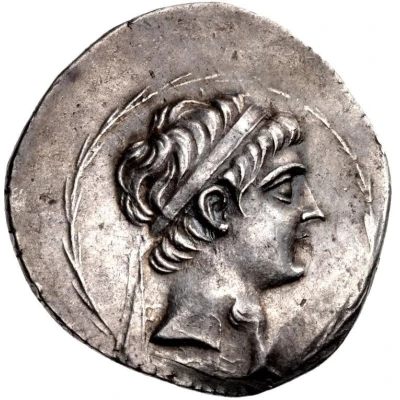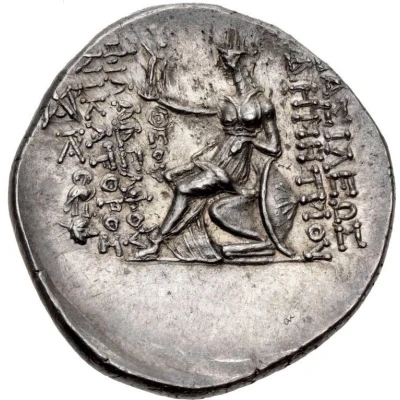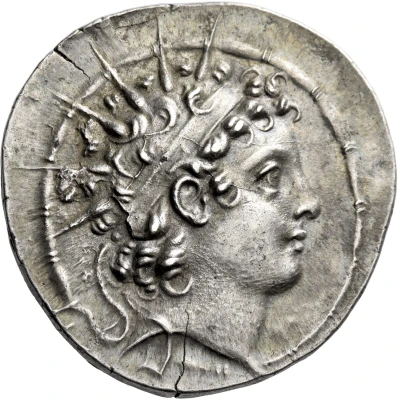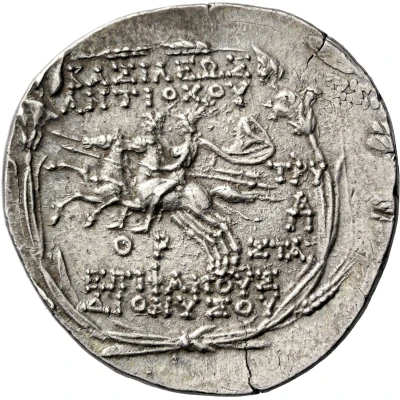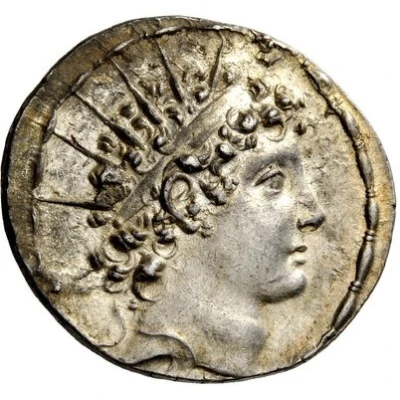
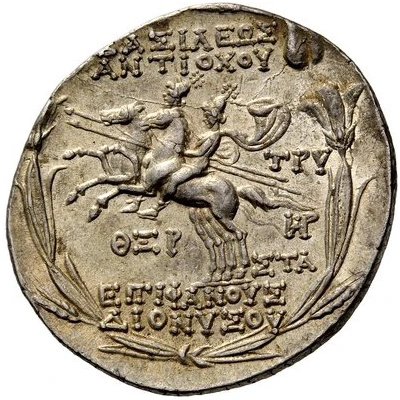

© Nomos AG
Tetradrachm - Antiochos VI Dionysos Antioch 144 BC - 143 BC
| Silver | 16.81 g | - |
| Issuer | Seleucid Empire (Seleucid Empire (305 BC - 64 BC)) |
|---|---|
| King | Antiochos VI Dionysos (145 BC - 140 BC) |
| Type | Standard circulation coin |
| Years | 144 BC - 143 BC |
| Value | Tetradrachm (4) |
| Currency | Drachm |
| Composition | Silver |
| Weight | 16.81 g |
| Shape | Round (irregular) |
| Technique | Hammered |
| Demonetized | Yes |
| Updated | 2024-10-10 |
| Numista | N#181494 |
|---|---|
| Rarity index | 97% |
Reverse
The Dioskouroi galloping left. Below, ΘΞΡ, to right ΤΡΥ over monogram of ΙΑΡ and ΣΤΑ and all within wreath of lily, ivy and grain leaves and ears
Script: Greek
Lettering:
ΒΑΣΙΛΕΩΣ ΑΝΤΙΟΧΟΥ
ΕΠΙΦΑΝΟΥΣ ΔΙΟΝΥΣΟΥ
ΘΞΡ ΤΡΥ
ΙΑΡ ΣΤΑ
Interesting fact
One interesting fact about this coin is that it features a unique blend of Greek and Persian influences in its design. The obverse side of the coin depicts the king, Antiochos VI Dionysos, with a beard and wearing a royal diadem, which is a typical feature of Greek coinage. However, the reverse side of the coin shows the god Apollo, who was revered by both Greeks and Persians, seated on a throne and holding a lyre, which is a distinctly Greek symbol. This blending of cultural influences reflects the complex history of the Seleucid Empire, which was founded by a Greek general but eventually came to encompass a vast territory that stretched from Greece to India, and incorporated many different cultures and religions.
